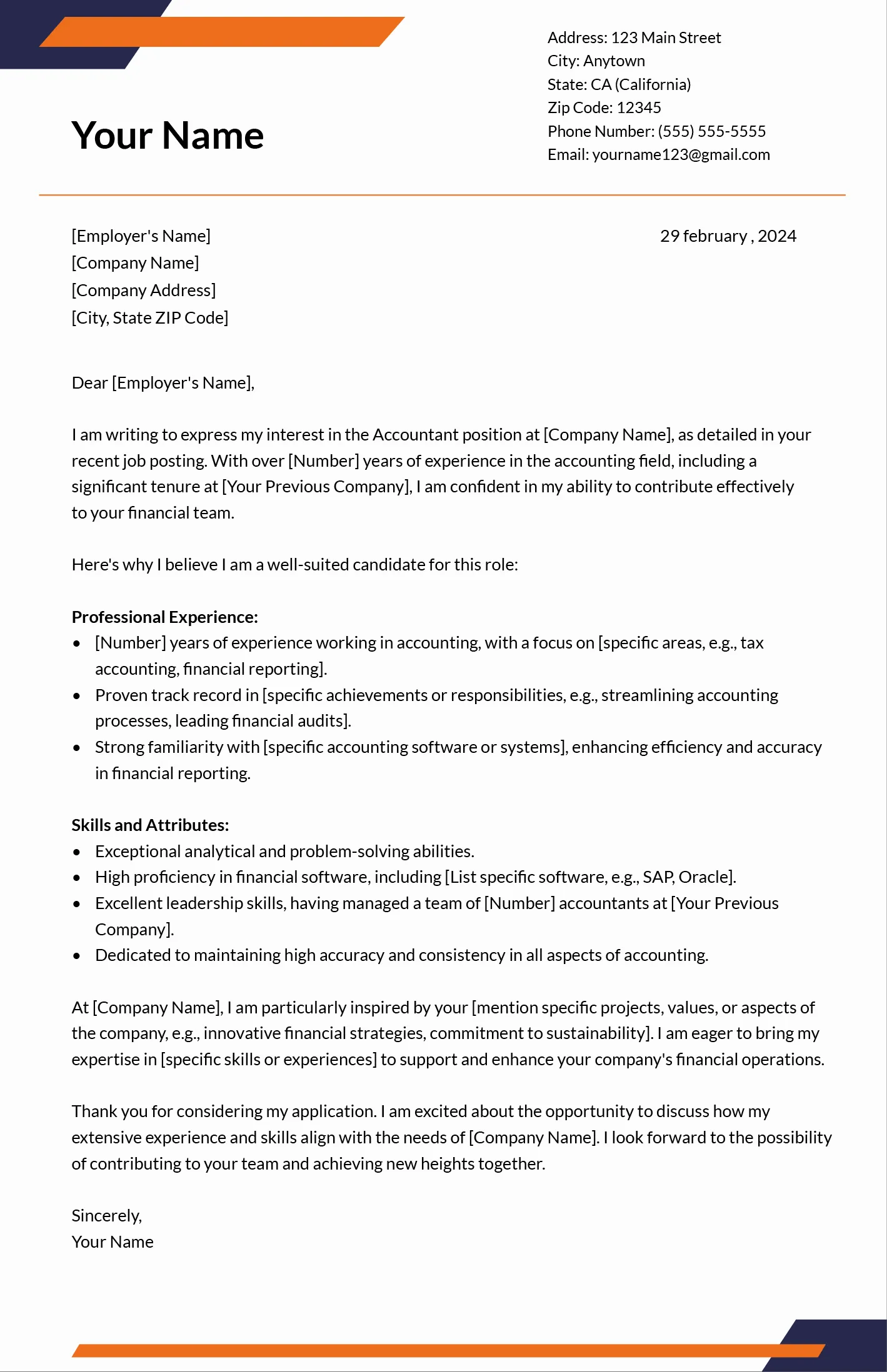Crafting a Cover Letter for Accountants
A well-crafted cover letter is your first opportunity to make a lasting impression on a potential employer in the competitive field of accounting. It’s more than just a formality it’s a strategic marketing tool showcasing your skills, experience, and personality. This guide will provide you with the essential elements and examples to create a compelling cover letter that grabs the attention of hiring managers and increases your chances of landing your dream accounting job. We will explore the key components, from highlighting your qualifications and tailoring your letter to the job description, to formatting and structure, proofreading, and ultimately, providing you with examples to model your own letter after. Remember, your cover letter is a snapshot of your professional brand, designed to persuade and entice the reader to learn more about you through your resume and, ultimately, in person.
Highlighting Your Qualifications
Your qualifications are the foundation of your cover letter. This section should provide a clear overview of your relevant skills, experience, and certifications. The goal is to immediately capture the reader’s attention by demonstrating your suitability for the role. The key is to select the most compelling achievements and skills that align with the job description. Remember to quantify your achievements whenever possible use numbers, percentages, or specific examples to illustrate your impact. This tangible evidence helps demonstrate your abilities and provides proof of your effectiveness as an accountant. Moreover, always emphasize the results you have generated in your previous roles to highlight your value to the prospective employer. Highlight your relevant experience and how you have successfully accomplished tasks and projects.
Quantifying Your Achievements
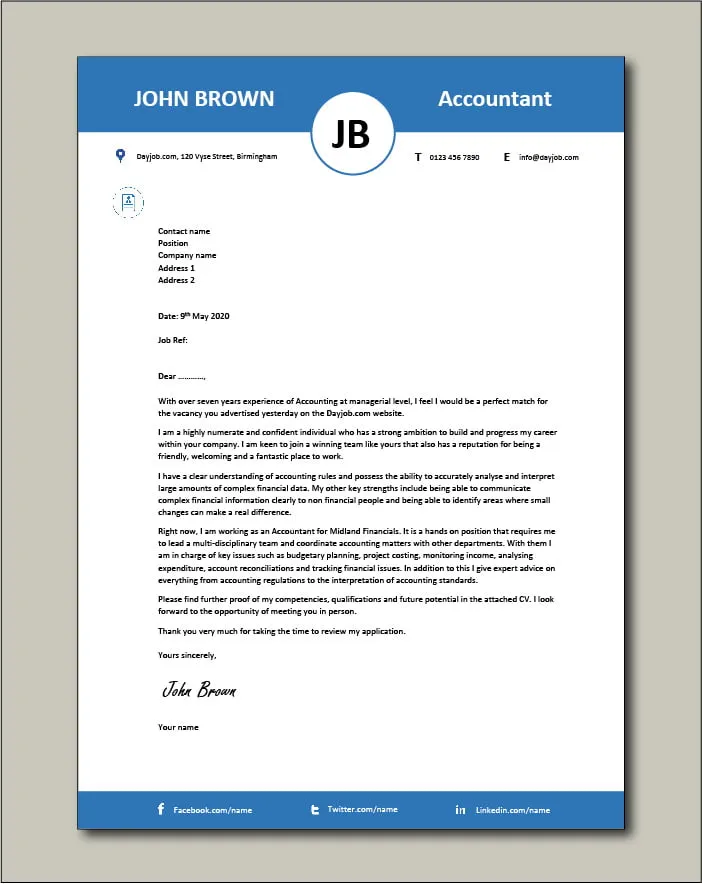
Quantifying your achievements is a critical step to showcase the impact you’ve made in previous roles. Instead of simply stating your responsibilities, provide concrete examples that demonstrate your proficiency and value. This approach helps potential employers understand the tangible benefits of hiring you. For instance, instead of writing, ‘Managed accounts payable,’ write ‘Reduced accounts payable processing time by 15% within one fiscal year, resulting in improved efficiency and cost savings.’ Another example could be, ‘Improved the accuracy of financial reporting, leading to a 10% reduction in discrepancies.’ Highlighting these accomplishments with specific data allows hiring managers to quickly assess the value you can bring to their organization. Always focus on the positive outcomes of your actions to make your qualifications more persuasive and memorable. Including these numbers helps show the impact you have.
Showcasing Relevant Skills
Showcasing your skills effectively is vital to securing an accounting role. Your cover letter should highlight a blend of technical and soft skills to demonstrate your professional capabilities. Carefully review the job description to identify the specific skills the employer is seeking and then tailor your letter accordingly. Use strong action verbs to describe your skills and accomplishments. Furthermore, you must align your skills with the needs of the employer. For example, if the job requires proficiency in a specific accounting software, ensure you mention your experience with it. This helps the hiring manager quickly identify your qualifications and how they meet the job requirements. Remember, this step is very critical as it is often the first thing a hiring manager will look at when assessing your application.
Technical Skills
Technical skills are the backbone of your accounting expertise, representing your practical capabilities. Include proficiency in accounting software like QuickBooks, SAP, or Oracle, emphasizing your experience and level of expertise. Mention your familiarity with accounting principles (GAAP or IFRS), tax regulations, and financial reporting standards. Other key skills to include are budgeting, forecasting, financial analysis, and auditing. Additionally, highlight your skills in data analysis tools and Microsoft Excel, including advanced functions. Tailor your list to the specific job requirements, but make sure you highlight the skills that are most important to the role. This step shows the recruiter you have the abilities to execute your work as required by the role.
Soft Skills
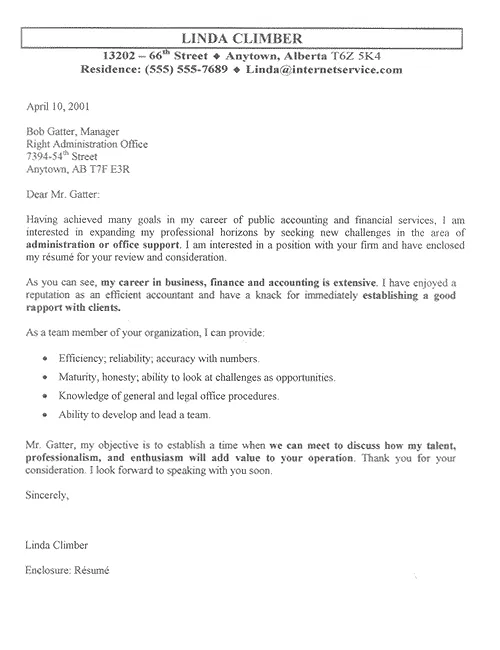
Soft skills play an essential role in your success, complementing your technical abilities. Highlight your communication skills, both written and verbal, which are critical for interacting with clients, colleagues, and stakeholders. Emphasize your problem-solving skills and your ability to analyze complex financial data and identify solutions. Teamwork and collaboration are also highly valued, so showcase your experience working in group environments. Adaptability and attention to detail are key qualities for accountants. Strong organizational skills, time management, and the ability to prioritize tasks efficiently are other skills to highlight. When you include these skills, you show that you have the qualities to excel in the role and have the capabilities to work in a team environment.
Tailoring Your Letter to the Job Description
Tailoring your cover letter to each specific job application is not optional it is a necessity. Generic cover letters are easily identifiable and often discarded. Instead, you must demonstrate that you understand the specific requirements of the role and the company’s needs. Carefully review the job description, identifying key skills, experiences, and qualifications that the employer is seeking. Then, structure your cover letter to directly address these requirements, providing concrete examples of how your skills and experience align. This personalized approach immediately shows the hiring manager that you have invested time and effort in understanding the role. Do not be afraid to adjust your letter for each job. This approach will help you stand out from the other applicants and increase the chances of your application being seen by the hiring manager.
Researching the Company
Thoroughly researching the company before writing your cover letter is very critical. This will enable you to personalize your letter and demonstrate your genuine interest in the organization. Visit the company’s website, read its mission statement, and explore its values and recent news or projects. If possible, look for information about the specific department or team you are applying to. Use this information to tailor your cover letter, demonstrating your understanding of the company’s goals and how your skills can contribute to them. Mention specific aspects of the company that resonate with you, showing that you’ve done your homework. Showing a level of familiarity with the company will help you show you have a genuine interest and helps the hiring manager know you want to work there.
Matching Skills to Requirements
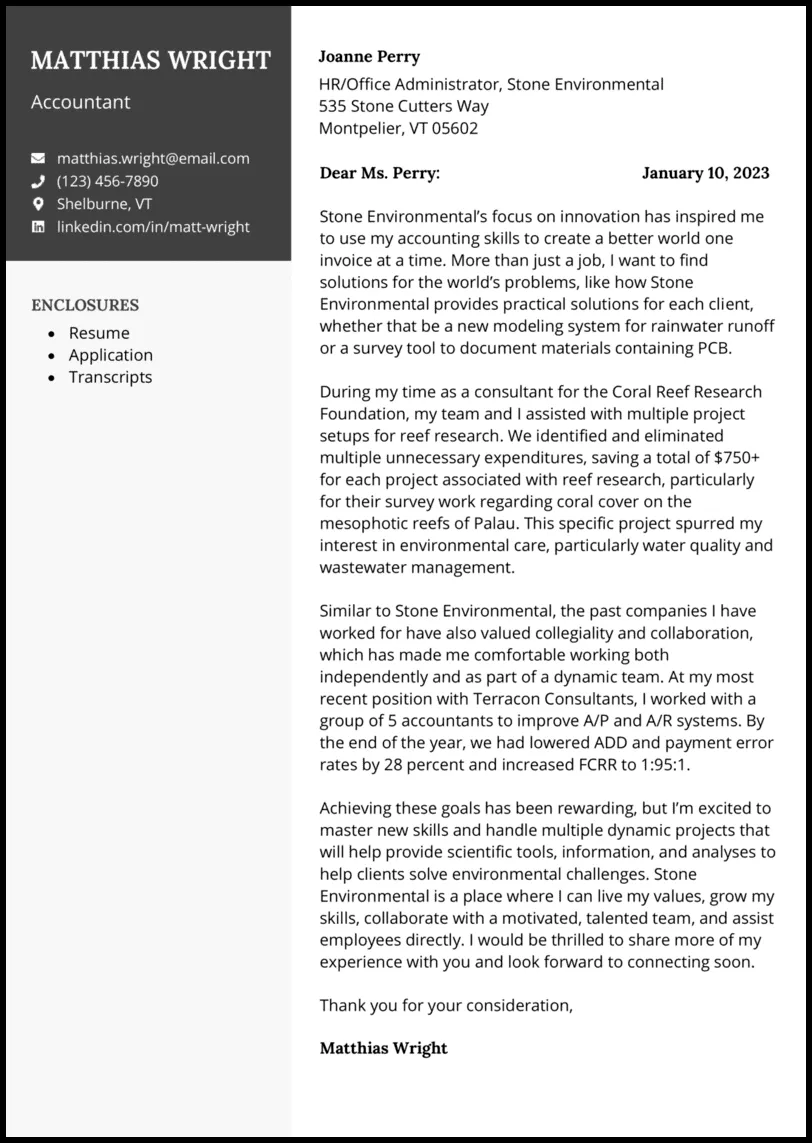
Carefully match your skills and experience to the requirements listed in the job description. For each requirement, provide a specific example from your professional background that showcases your relevant skills. Use keywords from the job description throughout your cover letter to ensure your application passes through applicant tracking systems (ATS). Ensure you have the skills that the employer is looking for and be able to demonstrate that through your experience. This step is vital for a successful cover letter. Aligning your letter with the employer’s needs will give you the best chance of your application making it past the first stage of the hiring process. If you do not have a specific skill, do not include it.
Formatting and Structure
The structure and formatting of your cover letter are crucial for making a positive first impression. A well-organized and visually appealing cover letter is easier to read and demonstrates your attention to detail. Proper formatting helps the reader quickly find the most important information and shows the recruiter your communication skills. Start with a professional header that includes your contact information, the date, and the recipient’s details. Use a clear, easy-to-read font, such as Arial or Times New Roman, and maintain a consistent font size throughout the document. Break your content into short, concise paragraphs with clear headings to guide the reader. Proofread your cover letter carefully to ensure there are no grammatical errors or typos. Overall, the structure and formatting will help you stand out from the crowd and make a professional first impression.
Header and Contact Information
The header of your cover letter should include your name, address, phone number, and professional email address. Ensure that your email address is professional and appropriate for the role. Below your contact information, include the date and the recipient’s details, such as the hiring manager’s name, title, and the company’s address. If you do not know the hiring manager’s name, research it or use a general salutation like ‘Dear Hiring Manager’. Make sure all the details are accurate and easy to find. Make sure to keep the header clean and uncluttered. These details are often overlooked, but they are very important as they give the recruiter an easy way to contact you.
Professional Salutations
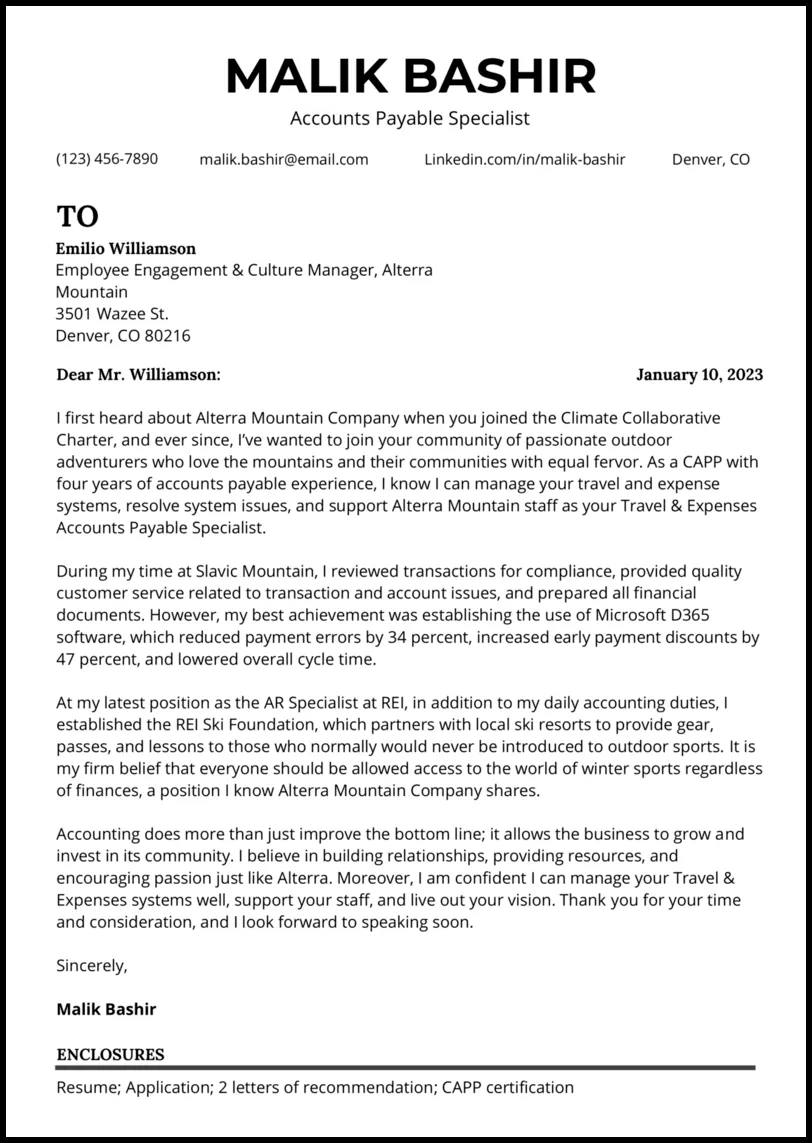
Your salutation sets the tone for the rest of your cover letter, so choose it wisely. ‘Dear Mr./Ms./Mx. [Last Name]’ is always a safe and professional option if you know the hiring manager’s name. Avoid generic salutations like ‘To Whom It May Concern’ or ‘Dear Sir/Madam,’ which can make your letter feel impersonal. If you are unsure of the hiring manager’s name, consider researching the company’s website or LinkedIn profile to find it. If you cannot find a specific name, use a general salutation like ‘Dear Hiring Manager’ or ‘Dear [Company Name] Team.’ The tone should be respectful and professional, but do not be too informal.
Body Paragraphs – The Core Message
The body paragraphs are the heart of your cover letter, where you present your qualifications and demonstrate your fit for the role. Keep the body concise and to the point. Use three or four paragraphs to address the following. First, the opening statement, use the first paragraph to state the position you are applying for, how you found out about the job, and briefly explain your motivation. The middle paragraphs are where you provide examples of your skills and your experience. Close with a statement that restates your interest, reinforces your qualifications, and expresses your eagerness to learn more. These three parts are designed to highlight the skills, experiences, and achievements that align with the job requirements. Remember to provide concrete examples to give the hiring manager a clear understanding of the value you can provide.
Opening Statement
Your opening statement should immediately grab the reader’s attention and clearly state the position you’re applying for. Mention where you found the job posting, whether it was on a job board, through a referral, or on the company’s website. Briefly state your strong interest in the position and express your enthusiasm for the company. Your opening paragraph should make it clear to the hiring manager what job you are applying for. Use a confident and enthusiastic tone. For example, you might start with, ‘I am writing to express my keen interest in the Accountant position at [Company Name], as advertised on [Platform].’ This will set the tone for the rest of the letter and draw the reader’s interest.
Middle Paragraphs – Skills and Experience
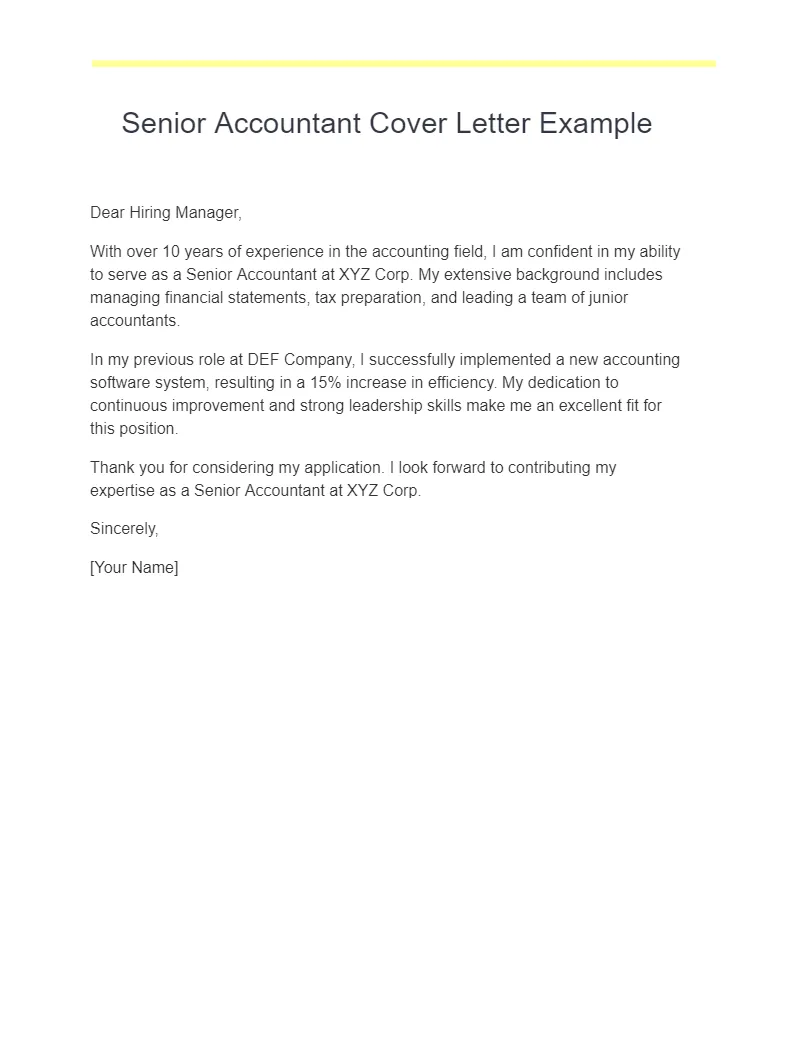
The middle paragraphs of your cover letter should provide the substance and showcase how your skills and experience align with the job requirements. Use these paragraphs to highlight your key accomplishments, using the STAR method (Situation, Task, Action, Result) to provide context and tangible results. Provide specific examples of how you’ve used your skills to solve problems, improve processes, or achieve positive outcomes in previous roles. Quantify your achievements whenever possible using numbers and metrics to demonstrate your impact. Tailor these paragraphs to the specific requirements mentioned in the job description, referencing the keywords. Make sure that your qualifications are related to the role. The middle paragraphs give the hiring manager a clear picture of your experience.
Closing Statement
Your closing statement should summarize your interest in the position and your confidence in your abilities. Reiterate your enthusiasm for the role and the company, emphasizing how your skills and experience make you a good fit. Include a call to action, such as inviting the hiring manager to contact you for an interview. Express your gratitude for their time and consideration. Keep your closing concise and professional, for example, ‘Thank you for considering my application. I am eager to discuss how my skills and experience can benefit your team and look forward to the opportunity to speak with you further. Please feel free to contact me at your convenience.’ A strong closing statement will leave the hiring manager with a positive impression and show your professionalism.
Proofreading and Editing
Before submitting your cover letter, thoroughly proofread and edit your document to ensure it is free of errors. Errors in your cover letter can create a negative impression and may lead to your application being immediately rejected. Make sure that there are no grammatical errors, spelling mistakes, or typos. Check the formatting and ensure it is consistent throughout the document. Ask a friend, family member, or career advisor to review your letter to catch any mistakes you may have missed. Reading it aloud can also help you identify awkward phrasing or unclear sentences. Do not skip this step; it is critical to ensuring your cover letter is polished and professional. Taking the time to proofread is an investment in your application and demonstrates your attention to detail.
Common Mistakes to Avoid
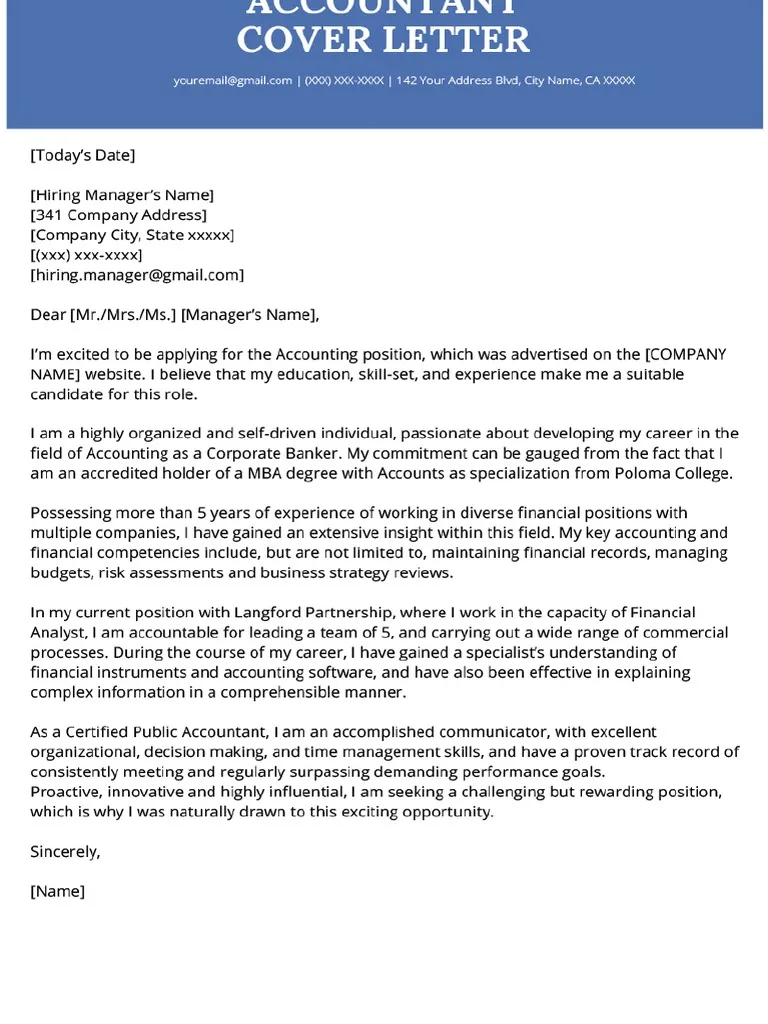
Be aware of the common mistakes that can undermine your cover letter and carefully avoid them. Do not use generic, impersonal language or simply restate your resume. Do not include any irrelevant information or focus on your needs instead of the employer’s needs. Ensure that your cover letter is not too long. A cover letter should be concise and clear, ideally limited to one page. Avoid overly casual or informal language, and maintain a professional tone throughout. Do not use jargon or acronyms that the hiring manager may not understand. Furthermore, do not make any negative comments about previous employers or colleagues. Be sure that you address your letter to the correct person, and be certain that you have proofread and edited the cover letter before submitting it. Avoid these mistakes to show your professionalism.
Seeking Feedback
Seeking feedback is an important step in perfecting your cover letter. Ask trusted sources like career advisors, mentors, or friends to review your letter and provide constructive criticism. They can offer valuable insights into areas that you may have overlooked. Pay attention to their feedback on clarity, conciseness, and overall impact. Ask them to assess if the letter effectively highlights your qualifications and aligns with the job description. Also, make sure to ask them if the tone is appropriate for a professional setting. Do not be afraid to ask for several rounds of feedback. Be open to suggestions and willing to revise your letter based on the feedback received. This process will allow you to refine your cover letter and make it more effective in attracting the attention of hiring managers.
Cover Letter Examples for Accountants
Reviewing cover letter examples is a great way to get a sense of how to structure your own letter. You can use these examples to learn the best practices and tailor your letter to your specific needs. Ensure that you change the information within the letter to fit your profile. Several online resources provide templates and examples of cover letters for various accounting roles, including entry-level, experienced, and CPA positions. Review these templates carefully and customize them by highlighting your relevant skills, experience, and achievements. Pay close attention to the language used, the formatting, and how the letter addresses the specific job requirements. Also, use these templates as inspiration, but customize them so that your letter is authentic.
Entry-Level Accountant Cover Letter
An entry-level accountant cover letter should highlight your educational background, internships, relevant coursework, and any skills you have. Even without extensive professional experience, you can demonstrate your abilities by showcasing your understanding of accounting principles and your potential. Mention any internships, volunteer work, or projects that demonstrate your commitment to the field. If you have any certifications or licenses, such as a CPA, highlight them prominently. Furthermore, emphasize your strong communication skills, analytical abilities, and proficiency with accounting software. Your cover letter should focus on your enthusiasm for the role, your ability to learn, and your eagerness to contribute to the organization. Show your potential to grow and show why you would be a good fit for the company. You can also add your GPA if it is strong.
Experienced Accountant Cover Letter
When writing a cover letter for experienced accountant roles, focus on your extensive professional experience and your specific accomplishments. Provide examples of how you have improved processes, managed projects, or achieved positive financial results. Quantify your achievements whenever possible, using numbers and metrics to illustrate your impact. If you have experience in a specific industry or with a particular type of accounting, be sure to highlight this. Tailor your letter to the specific requirements of the job. Additionally, highlight your leadership skills, problem-solving abilities, and your ability to work in a team environment. Showcase your experience in different areas of accounting, such as financial reporting, budgeting, or auditing. The letter should give the recruiter a clear understanding of what you can provide.
CPA Cover Letter Example
A CPA cover letter should emphasize your credentials and your expertise as a Certified Public Accountant. Highlight your CPA license and other relevant certifications, such as CFE or CMA. Demonstrate your understanding of accounting principles, financial reporting, and tax regulations. Your cover letter should show your skills in areas such as auditing, tax planning, and financial analysis. Show how you are able to meet the requirements of the role. Quantify your accomplishments, providing specific examples of how you have improved efficiency, reduced costs, or increased revenue. Demonstrate your commitment to ethical behavior and your ability to maintain accuracy and integrity. Also, highlight any leadership roles you have held, showcasing your ability to manage teams and mentor others.
